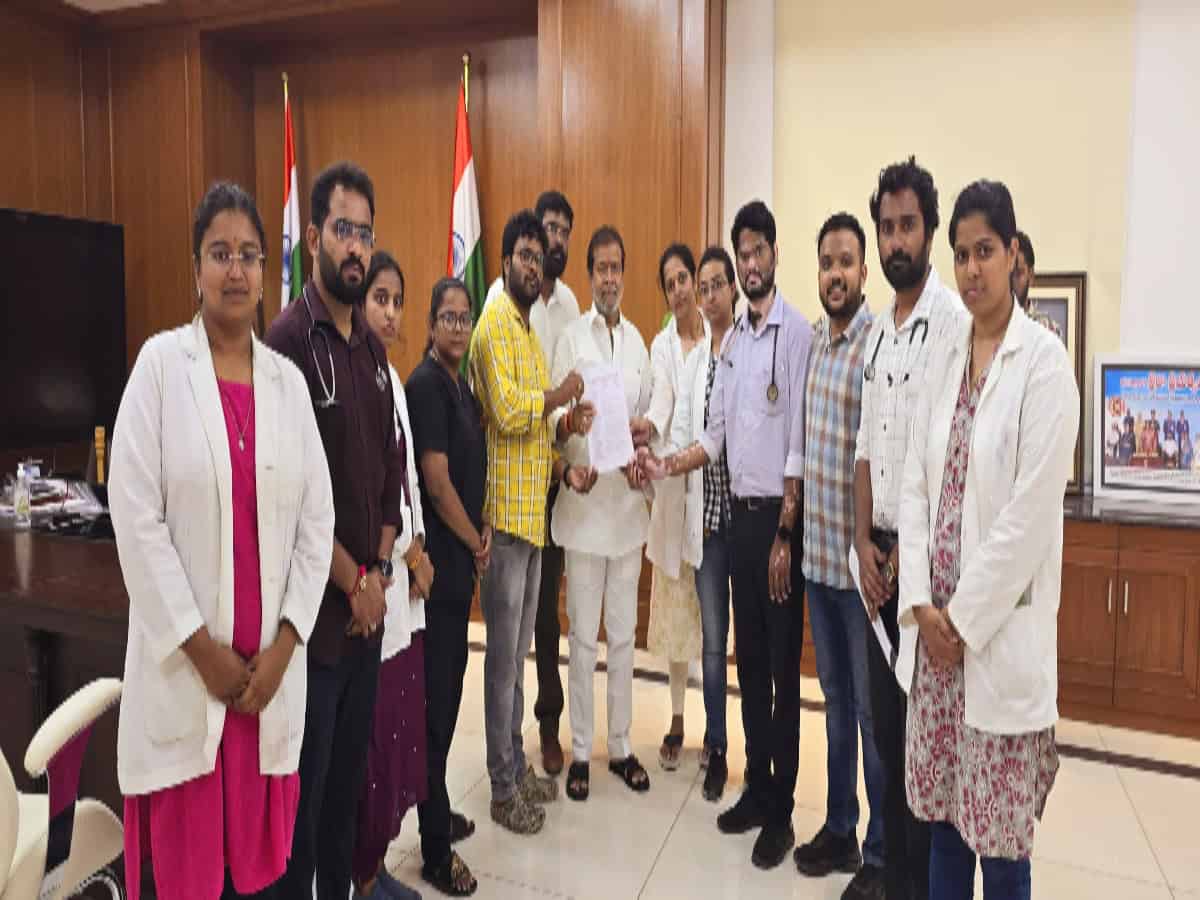
Hyderabad: Telangana health minister Damodar Rajanarsimha on Monday, August 20 agreed to examine hospital security as the junior doctors strike entered its seventh day.
A delegation of the Telangana Junior Doctors Association (TJUDA) led by President Dr Rahul Kommu met the the minister and put forth its demands.
The junior doctors have requested the introduction of security arrangements with SPF forces in all government hospitals and medical colleges in the state as per GO 103.
Additionally, they asked for installation of CCTV cameras, and the deployment of trained security personnel in hospitals.
TJUDA also submitted a representation to the minister, pressing for implementation of the ‘Prevention of Violence Against Healthcare Professionals and Clinical Establishments Bill 2022’ and a provision for duty rooms for on-duty resident doctors at all government general and teaching hospitals.
“The junior doctors have requested the introduction of security arrangements with SPF forces in all govt hospitals and medical colleges in the state as per GO No. 103. Additionally, they asked for installation of CCTV cameras, and the deployment of trained security personnel in hospitals,”said a pres release from the minister’s office.
The doctors across the state have been protesting In solidarity, with the junior doctor who was brutally raped and murdered at the RG Kar Medical College and Hospital in Kolkata on August 9.
From junior doctors to the senior-most surgeons were enraged, not because of this one incident that had abruptly ended the glorious career of a medico, but because it could happen to any woman irrespective of her profession or social standing.
Medicos decry lack of security at Telangana govt hospitals
“There was a time when only 10 percent of all doctors in this hospital used to be women. Today, whether it’s in PG or MBBS programs, 50 percent of the medicos are women. But the reality is that there are not even separate restrooms for male and female doctors in most of the departments,” a female PG medico from the OGH told Siasat.com, on condition of anonymity.
“There are just two beds crammed inside a small room where we are required to sleep during the night, and out of 30 doctors on night duty, at least half of them are women,” she underlined.
Doctors are expected to put in a marathon 45-hour shift at least once a month, and at least twice a week they are required to work night shifts.
The availability of proper changing rooms, sleeping areas, toilets, and bathrooms within the premises is crucial for the safety of female doctors. However, many government hospitals in Hyderabad, such as OGH, which was originally built in the 1920s with additional blocks added throughout the later part of the century, were constructed before the 2000s. These facilities were designed to meet the needs of the gender mix of doctors from that era.

